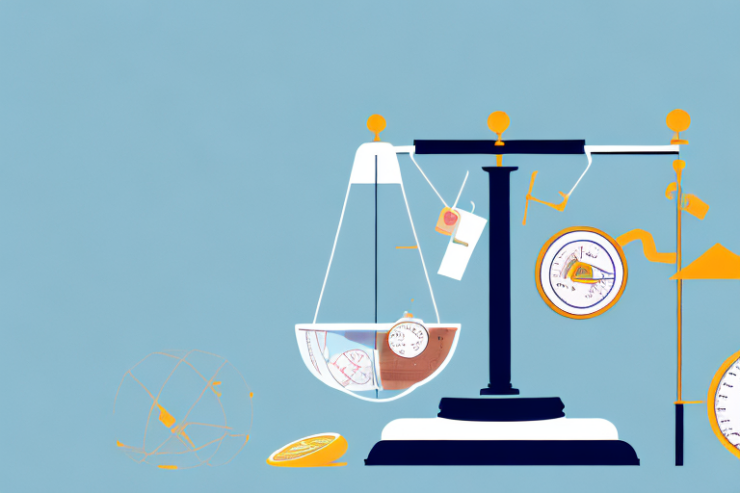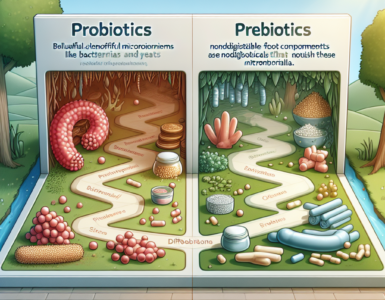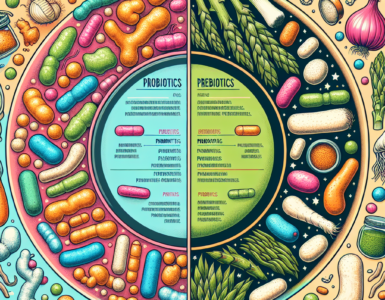Achieving a healthy work-life balance is a key component of good mental health and overall well-being. Balancing professional and personal commitments can be challenging, particularly in today’s fast-paced and demanding work environment. This article provides a guide to understand, assess, and achieve work-life balance by adopting various strategies.
Understanding Work-Life Balance
The term “work-life balance” refers to the equilibrium of a harmonious and productive life between personal and professional commitments. It is finding the right balance that gives an individual the energy and enthusiasm to pursue both work and other activities, while also feeling satisfied and fulfilled. Achieving this balance is crucial for a healthy and fulfilling life.
Defining Work-Life Balance
Work-life balance is an essential aspect of individual well-being and can be defined as:
- Allocating the right amount of time to work and personal life.
- Undertaking activities that promote physical, mental, and emotional well-being.
- Creating boundaries between your personal and professional life.
Work-life balance is not just about dividing your time equally between work and personal life. It’s about finding the right balance that works for you, your family, and your career. It’s important to prioritize your time and energy so that you can enjoy both your personal and professional life.
The Importance of Work-Life Balance
Achieving a proper balance between work and personal life benefits mental and physical health in numerous ways:
- Reduces job-related stress: When you have a good work-life balance, you’re better able to manage job-related stress and prevent burnout.
- Increases job satisfaction: When you have time for personal interests and activities, you’re more likely to feel fulfilled and satisfied with your job.
- Improves physical health: By taking time for physical activities such as exercise, you can reduce the risk of lifestyle-related diseases such as diabetes, obesity, and cardiovascular diseases.
- Preserves mental well-being: Taking time for yourself can help prevent mental health issues such as depression, anxiety, and other mental disorders.
Having a good work-life balance is not only beneficial for your personal well-being, but it can also have a positive impact on your professional life. When you’re happy and fulfilled in your personal life, you’re more likely to be productive and engaged at work.
The Consequences of Poor Work-Life Balance
Failing to achieve proper work-life balance can lead to a host of negative consequences:
- Burnout: Long working hours and minimal time for personal life can cause mental exhaustion and burnout. This can lead to decreased job performance and job satisfaction.
- Health problems: Long hours and stress can lead to poor physical health, including ailments such as high blood pressure, heart disease, and obesity. This can lead to increased sick days and decreased productivity.
- Mental health problems: Failing to manage work-life balance can lead to mood changes, irritability, depression and other mental health issues. This can lead to decreased job performance and strained personal relationships.
- Difficulty managing personal relationships: Neglecting personal life can strain personal relationships and diminish quality time with family and friends. This can lead to a lack of support and increased stress.
It’s important to prioritize work-life balance in order to prevent these negative consequences. By taking time for yourself and your personal life, you can improve your overall well-being and lead a more fulfilling life.
Assessing Your Current Work-Life Balance
Are you struggling to find the right balance between your work and personal life? Are you feeling overwhelmed and stressed out? If so, you’re not alone. Achieving a work-life balance is essential for your overall well-being and happiness. In this article, we’ll explore some tips and strategies to help you assess your current work-life balance and make positive changes to achieve a healthier, happier life.
Identifying Imbalances
One of the first steps to creating a healthy work-life balance is by identifying areas of your life that require more attention. This can be challenging, as it requires you to take a step back and evaluate your current situation objectively. Some signs that your balance may be off include:
- Feeling stressed or anxious regularly
- Having little time for hobbies or outside interests
- Being unable to keep up with work responsibilities or meeting deadlines
- Feeling tired or lacking energy
If any of these sound familiar, it’s time to take action and make some changes.
Recognizing Stressors and Triggers
Once you have identified areas of imbalance, it is essential to recognize the sources of your stressors and triggers. Stressors and triggers are differences in the work-life balance that cause you to feel unhappy, and they can differ depending on individual circumstances. Some common stressors and triggers may include:
- Workload and deadlines
- Family responsibilities and obligations
- Interpersonal conflicts
- Financial pressures
By recognizing these stressors and triggers, you can take steps to minimize their impact on your life and create a more balanced approach.
Evaluating Personal and Professional Priorities
To achieve work-life balance, it is essential to evaluate and prioritize the essential aspects of your life, such as work, family, social life, professional development, and personal growth. By assessing and understanding your priorities, you can make informed decisions and take steps to achieve balance.
For example, if you’re struggling to find time for hobbies or outside interests, it may be time to re-evaluate your work schedule and make adjustments to create more time for these activities. Alternatively, if you’re feeling overwhelmed with family responsibilities, it may be time to delegate some tasks or seek outside help to alleviate some of the pressure.
Remember, achieving a healthy work-life balance is an ongoing process that requires regular evaluation and adjustment. By taking small steps each day to create a more balanced approach, you can achieve greater happiness, fulfillment, and success in all areas of your life.
Strategies for Achieving Work-Life Balance
Work-life balance is essential to maintain a healthy and happy life. It can be challenging to achieve, especially in today’s fast-paced and demanding work environment. However, there are several strategies that you can adopt to achieve work-life balance.
Setting Boundaries Between Work and Personal Life
Creating boundaries between work and personal life is essential to maintain balance. Setting realistic and achievable boundaries can help to carve out personal time, minimize stress levels, and avoid burnout. Here are some ways to set boundaries:
- Avoid checking work emails outside working hours. It’s essential to disconnect from work when you’re not working to avoid burnout.
- Respect off-hours and personal time. Avoid scheduling work-related meetings or calls during personal time.
- Avoid taking work home or identifying a specific workspace. It’s essential to have a separate workspace to avoid work spillover into personal time.
- Communicate your limits and boundaries clearly with your employer and colleagues. Let them know when you’re available and when you’re not.
Time Management Techniques
Effective time management and prioritization is key to managing work-life balance and reducing stress levels. Proper time management can ensure timely completion of tasks, reduce distractions, and help to reduce the risk of work and personal life spillover. Here are some time management techniques:
- Develop and follow a time-management system, such as the Pomodoro Technique or Eisenhower Matrix. These techniques can help you prioritize your tasks and manage your time more effectively.
- Use productivity tools such as time-management apps and project management software. These tools can help you stay organized and manage your time more efficiently.
- Schedule time for personal activities and hobbies. It’s essential to make time for the things you enjoy outside of work.
- Identify and prioritize critical tasks. Focus on completing the most important tasks first to avoid feeling overwhelmed.
Prioritizing Self-Care and Personal Well-being
Caring for oneself is an essential aspect of maintaining work-life balance. This includes prioritizing activities that promote physical and mental health, such as:
- Set aside time for exercise or physical activity. Regular exercise can help reduce stress levels and improve overall health and well-being.
- Meditate or practice mindfulness. These practices can help reduce stress levels and improve mental health.
- Get enough sleep. It’s essential to get enough sleep to maintain good health and well-being.
- Engage in a hobby or pursue an interest outside of work. Doing something you enjoy can help reduce stress levels and improve overall happiness.
Delegating and Outsourcing Tasks
Asking for assistance and delegating tasks can help to free up time and reduce stress levels, making it easier to achieve work-life balance. Here are some ways to delegate and outsource tasks:
- Delegate time-consuming tasks to colleagues. This can help you focus on more critical tasks and reduce stress levels.
- Outsource personal tasks such as cleaning or shopping. This can help free up time for other activities.
- Ask for support or help from family or friends when needed. Don’t be afraid to ask for help when you need it.
By adopting these strategies, you can achieve work-life balance and maintain a healthy and happy life. Remember to prioritize your well-being and make time for the things you enjoy outside of work.
Maintaining Work-Life Balance in the Long Term
Work-life balance is a crucial aspect of overall well-being. Achieving balance between work and personal life can be challenging, but it is essential to maintain a healthy and fulfilling life. Here are some tips to help you maintain work-life balance in the long term:
Regularly Reassessing Your Balance
Work-life balance is not a one-time goal, and it requires continuous attention and effort. It is essential to regularly assess and evaluate your work-life balance to ensure that you are remaining on track and making progress towards achieving balance. Take some time to reflect on your current balance and identify areas that need improvement. Are you spending too much time at work? Are you neglecting your personal life? Once you have identified areas that need improvement, create a plan to address them.
Regularly reassessing your balance can help you stay on track and make adjustments as needed. It can also help you identify when you need to make significant changes in your life to achieve balance.
Adapting to Life Changes and Transitions
Life changes and transitions, such as getting married, having children, or entering a new job, can result in a shift in priorities and demands. It is essential to acknowledge these changes and adjust your work-life balance strategy accordingly to maintain balance.
For example, if you have just had a child, you may need to adjust your work schedule to accommodate your new responsibilities as a parent. You may also need to delegate tasks at work to ensure that you have enough time to spend with your family. Adapting to life changes and transitions can help you maintain balance and prevent burnout.
Building a Support Network
Building a supportive network of family, friends, and colleagues can provide much-needed assistance and guidance when pursuing work-life balance. Supportive people can help alleviate stress, provide advice, or even offer to help with tasks when needed.
Having a support network can also help you maintain balance by providing a sounding board for your ideas and concerns. You can bounce ideas off of your support network and get feedback on your plans for achieving balance.
In conclusion, maintaining work-life balance is an ongoing process that requires attention and effort. Regularly reassessing your balance, adapting to life changes and transitions, and building a support network can help you achieve and maintain balance in the long term.
Conclusion
Work-life balance is a crucial aspect of maintaining personal and professional well-being. Adopting effective strategies such as setting boundaries, time management, prioritizing Self-care, and building a supportive network can help reduce stress and help you achieve long-term balance. Remember, achieving work-life balance is a process that requires continuous effort and attention. With patience and persistence, you can find the right balance.











